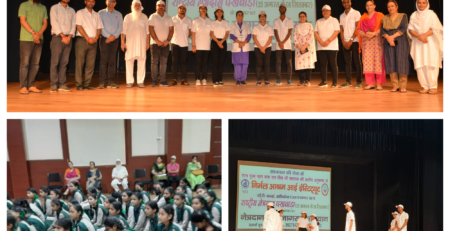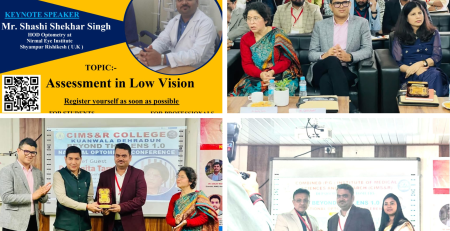Case Study: Low Vision Aids playing a vital role in managing Visual Impairment in a Teenage Patient with Retinitis Pigmentosa
Patient Information:
- Name: Arushi
- Age: 15 years
- Location: Dehradun
- Initial Visit: 15th June 2023
- Subsequent Visit: 18th August 2023
Presenting Complaint: Arushi, a 15-year-old resident of Vikasnagar, visited the hospital on 15th June 2023 with a complaint of blurry vision. Upon examination, her initial vision was measured as 6/36 in both eyes after refraction.
Initial Diagnosis and Treatment: After comprehensive assessment, it was determined that Arushi required corrective glasses to improve her visual acuity. She was provided with appropriate corrective glasses, however, on her subsequent visit, she returned to the hospital with ongoing complaints of blurry vision.
Further Diagnostic Procedures: During her follow-up visit, a series of diagnostic procedures were conducted to identify the underlying cause of Arushi’s persistently poor vision. These procedures included:
- Humphrey Visual Field Analyzer (HFA): To assess her visual field and identify any abnormalities.
- A-scan Biometry: To measure the length of the eye for precise refraction.
- Dilated Refraction: To determine the most accurate prescription for her corrective lenses.
- Tonometry: To measure intraocular pressure.
- 90D Examination: To examine the back of the eye and its structures.
- Fundus Evaluation: To assess the retina for any signs of pathology.
Final Diagnosis: Retinitis Pigmentosa After a thorough evaluation, Arushi was diagnosed with retinitis pigmentosa, a progressive genetic disorder affecting the retina’s photoreceptor cells. This condition leads to gradual vision loss and can cause difficulties with both peripheral and night vision.
Treatment Approach: To address Arushi’s vision impairment, a multifaceted treatment plan was devised:
- Telescope for Distance Vision: Arushi was provided with a Handheld monocularTelescope(6X) for distance vision. This device significantly improved her visual acuity from 6/24 to 6/6p, allowing her to see clearly even from a distance.
- Dome Magnifier for Near Vision: For close vision tasks, Arushi was given a Dome Magnifier (4X), which brought about a remarkable improvement in her near vision. Her near vision acuity improved from N18 to N6 binocular.
Patient Testimonial: When questioned about her chief complaints, Arushi expressed that she had been struggling to see the blackboard even from the front row of her classroom. However, with the assistance of the provided devices, she was now able to engage in her studies without any difficulty, greatly enhancing her academic performance and overall quality of life.
Conclusion: Arushi’s case highlights the importance of comprehensive assessment and tailored treatment in managing vision impairment caused by retinitis pigmentosa with the help of Low Vision Aids. The combination of a telescope for distance vision and a Dome Magnifier for near vision brought about a significant improvement in her visual acuity, allowing her to overcome her challenges and actively participate in her education and daily activities. This case underscores the critical role of modern diagnostic procedures and assistive devices in enhancing the lives of individuals with visual impairments.
Shashi Shekhar Singh
H.O.D (Optometry)
Nirmal Ashram Eye Institute












Leave a Reply